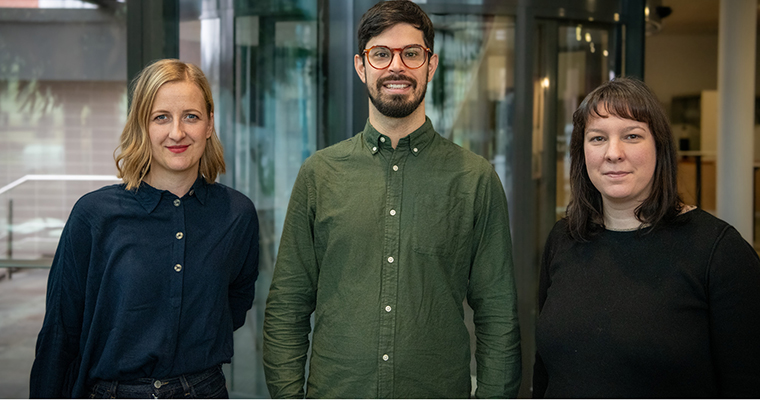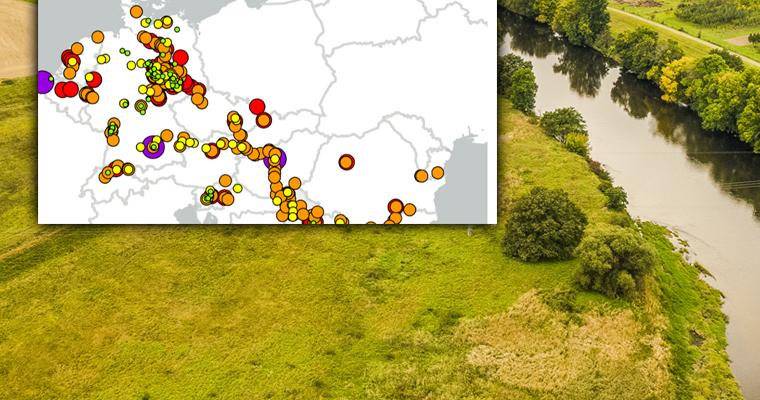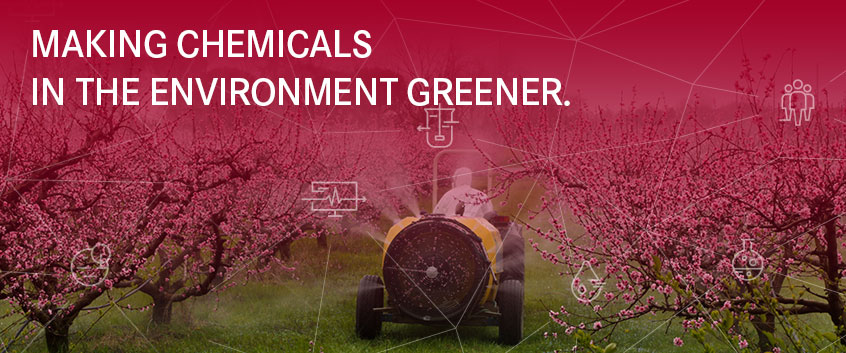
Research Unit
Chemicals in the Environment
Modern societies use many chemicals in increasing amounts for various services. At the same time we strive for a pollution free non-toxic environment.
To safeguard environmental and human health we have to develop understanding of what happens to chemicals once they are released into the environment and how chemicals may elucidate adverse biological effects. This knowledge is used to develop strategies to predict chemicals’ fate and effects for risk assessment and provides tools to monitor environmental quality.
Challenges
Our society develops, produces, uses and disperses a diverse and vast amount of chemicals – this is not just a current trend but one that is expected to continue into the future. These chemicals are in the form of raw materials, compounds and products and are believed to improve our standard of living.The material world is shaped by chemical cocktails composed of diverse molecules.
The material world is shaped by many diverse products ‒ all containing various components – virtually chemical cocktails. However, these “cocktails” have the potential to critically harm our environment and humans because chemicals are being distributed extensively in the environment through the increasing recirculation of water, the growing demand for agricultural land or the worldwide growth in prosperity and demand for natural resources. The hazards of chemical substances to humans and the environment has been an on - going topic for decades. Time and time again, individual substances become the focus of public debates or make the headlines. The current approach that is used to assess the hazard potential of chemicals is based on individual substances. However, we need to bear in mind that in reality we are faced with complex mixtures whose composition changes in time and space.
Questions
Given these challenges, what should an integrated assessment approach look like? How can we succeed in developing a better understanding of the processes controlling retention levels, chemical transformation or biodegradation and the effects of chemicals under real environmental conditions? How can the (bio) transformation of pollutants be measured in the environment? Which role do ecosystem services play? Can model systems be developed that enable the effects of chemicals to be accurately assessed for different organisms? How can the effect of chemical mixtures and their impacts be predicted? Will there be substances in the future with a “built-in expiry date”?
Scientists of the Research Unit “Chemicals in the environment” are pursuing three goals to achieve the goal that chemicals will no longer pose a danger to humans or the environment. First of all they are trying to understand the transformation of chemicals in the environment as a characteristic of the system. Secondly, they want to undertake integrated assessments of the impacts of chemicals on humans and the environment. Thirdly, the biological effect in particular – not the chemical concentration – is to be understood as a measure. With these goals in mind, researchers are systematically analysing and projecting the degradation and retention rates of chemicals (the dynamics of matter) and the impacts of chemicals on biological and ecological systems. They are qualitatively and quantitatively recording the ecosystem service “chemical degradation” and want to predict, assess and manage it to the landscape level. They are analysing the overall impact on human health and the environment and developing concepts to assess these impacts. Lastly, they are using concrete case studies to identify key molecular and ecosystem processes that affect the impacts and degradation of chemicals, leading to technical, social and regulatory solutions for an improved chemical management. With this novel approach to assessing chemicals, the researchers in this thematic area want to promote precautionary principles and preventative measures in order to avoid the need for remediation later on.
With new observation methods, measuring techniques and models at hand, scientists strive to enable forecasts and an early identification of critical contamination and harmful effects on humans and ecosystems. This knowledge will enable new approaches for risk assessment to be developed. They are developing procedures whereby the drivers of chemical risks can be identified in complex chemical mixtu-res or in scenarios with a multitude of other stress factors. They are making fine adjustments, to make sure that the degradation of chemicals in technical or natural ecosystems to the landscape level can be purposefully controlled or an unwanted discharge of chemicals avoided. Furthermore, they define the criteria, by which the carrying capacities of ecosystems can be assessed and the development of “green chemistry” can be promoted.
The expertise and the portfolio of tools range from chemical analysis and bioanalytical methods to isotope - based methods and research on the degradation of chemicals, as well as technical solutions for pollutant retention or degradation and human - toxicology model systems to observation, experimentation and modelling systems that are internationally competitive.
Big data sets and information about cells, genes, proteins and metabolites are to be managed and made available.
To implement this new approach to chemical assessments and treatments, ecotoxicologists and health researchers have joined forces with environmental chemists, environmental microbiologists and technologists. Research co-operation takes place with European, international and national partners in the form of research alliances, collaborative projects and scientific communities. The European project SOLUTIONS, for example, wants to provide solutions for present and future emerging pollutants in water resources in a close dialogue with stakeholders.
A close information exchange with national and international committees, authorities and institutions that are responsible for assessing chemicals, is a prerequisite for transferring knowledge and results into practice. The broad spectrum of professional knowledge in system-, cell- and ecotoxicology, epigenetics and molecular systems biology as well as unique analytical and bioanalytical facilities make the UFZ a sought - after partner and expert for the scientific community, the authorities and the chemical industry. The German Environment Agency (UBA), the Federal Institute for Risk Assess-ment (BfR), the Institute for Environment and Sustainability (IES) of the European Commission’s Joint Research Centre (JRC), the European Food Safety Authority (EFSA) and the Environmental Protection Agency EPA in the USA are all important strategic partners in the field of environmental research on chemicals.
News
Highlights from the Research Unit
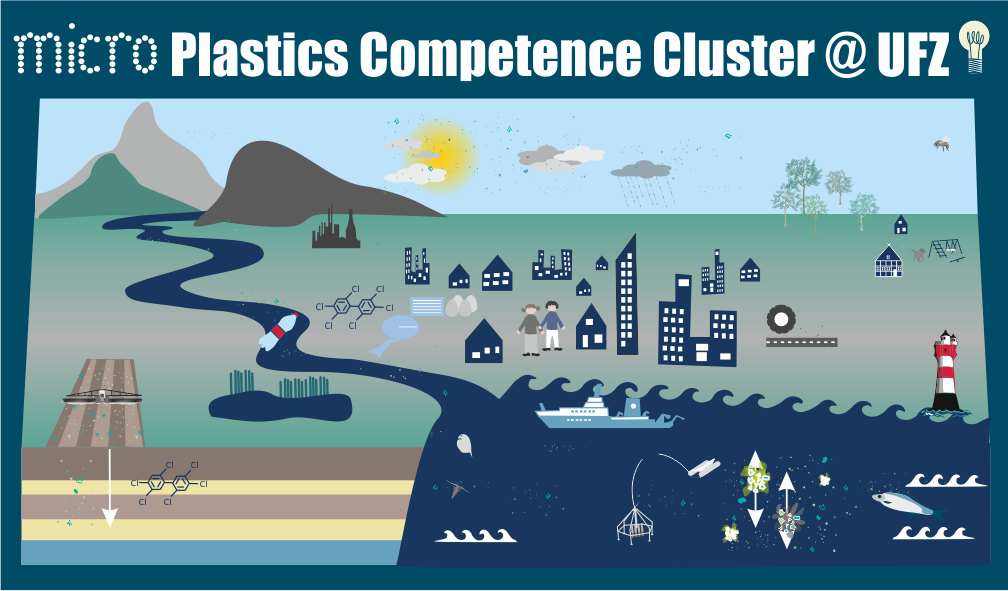
The Microplastics Competence Cluster at UFZ investigates various aspects of macro-, micro-, nanoplastics and associated chemicals in the environment from a wide range of perspectives, including environmental chemistry, eco-/human toxicology and risk assessment. Numerous third-party funded projects are involved.
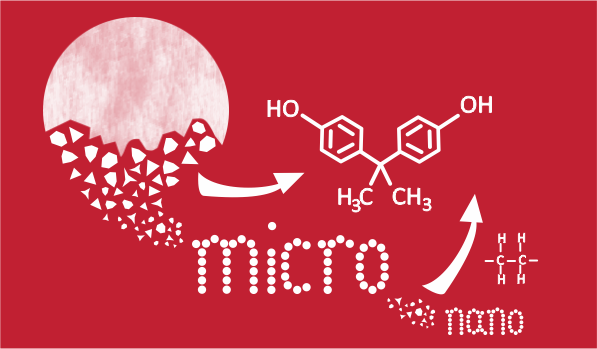
The research projects DaNa4.0, MANTRA and P-LEACH investigate as sub-prjects of the Microplastics Competence Cluster the effects of novel materials such as nanoplastics and microplastics on the environment and health, developing reliable testing strategies to assess their safety.
For more information on microplastics research at UFZ: Microplastics Competence Cluster
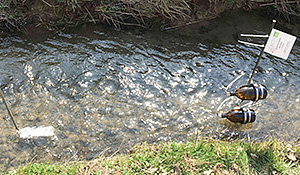
Plant protection products in the environment are partly responsible for the progressive loss of biodiversity. The Nationwide Monitoring of Small Streams (KgM) project provides a quantitative assessment of the influence of pesticides from diffuse agricultural sources on small and medium-sized streams.
In a two-year pilot study, we investigate the impact of pesticides and their ecological consequences at 70 monitoring sites throughout Germany each year.
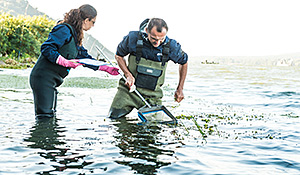
After five years of collaborative research in the EU project “SOLUTIONS for present and future emerging pollutants in land and water resources management” this collection of policy briefs compiles major findings and recommendations by this large scale research project.
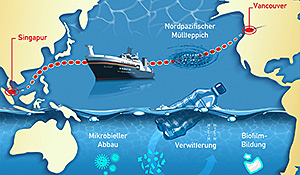
The Pacific expedition of the MICRO-FATE project investigates the occurrence and fate of microplastics in the sea. The five-week expedition of the research vessel SONNE took the scientists from Vancouver to Singapore.

Parabens are used as preservatives in cosmetics. If pregnant women use cosmetics containing parabens that remain on the skin for protracted periods, this may have consequences for their child's subsequent weight development. This is demonstrated in a study published in the journal Nature Communications by researchers from the Helmholtz Centre for Environmental Research (UFZ) in collaboration with colleagues from Leipzig University, Charité University Hospital in Berlin and the Berlin Institute of Health (BIH).
press release, 12 February 2020 "Overweight from cosmetics"
Infrastructures & Publications
The complete list of publications can be found on the department pages
Computational Biology & Chemistry
ChemProp
a software system to estimate chemical properties from chemical stucture (QSAR and QSPR)
DRomics Shiny Application
on-line tool for dose-response (or concentration-response) characterization from omics data
FishInspector
allows the user-friendly and easy annotation of features in zebrafish embryo 2-dimensional images
Indicate
Desktop application for assessing stress effects on ecosystems, including bioindicator tools and models for environmental data analysis
LSER database
to calculate partition coefficients of chemicals
MassBank
an open access database for mass spectrometry reference spectra of the environmental and metabolomics domains
MOD-Finder
is an easy-to-use R Shiny tool to search for compound-related omics datasets in different layer: transcriptome, proteome, metabolome
Multiple Coupled Compartements
to calculate the concentration-time curve of a chemical in 4 coupled compartments which are connected by reversible processes like diffusion, transformation and partitioning
Toxicogenomic Fingerprint Browser
a R Shiny tool for exploration and visualization of time and concentration dependent toxicogenomic data obtained with the zebrafish model
toxprofileR
a R package to work with dose and time dependent toxicogenomic data based on self-organising maps
ProVis - Centre for Chemical Microscopy
Plattform ProVIS
MetaPro / Prometheus - Omics Platform
MetaPro - Prometheus
CITEPro - The Platform increases the sample throughput of established bioanalytical, toxicological and analytical methods
Platform CITEPro

